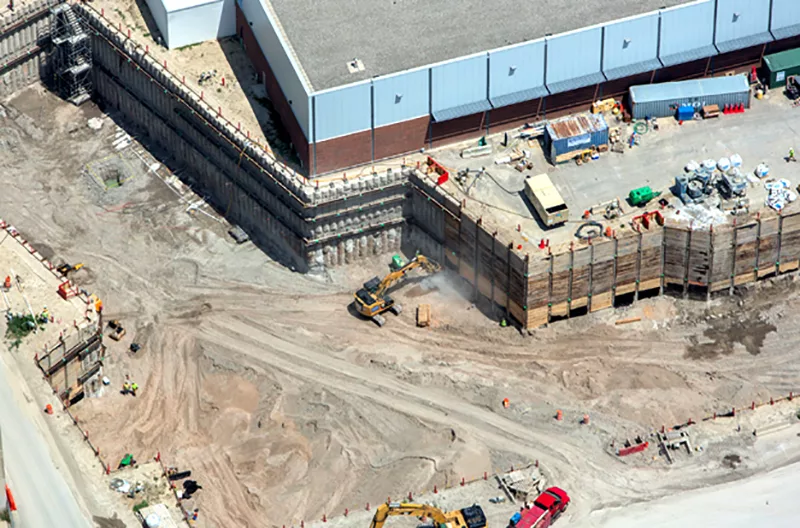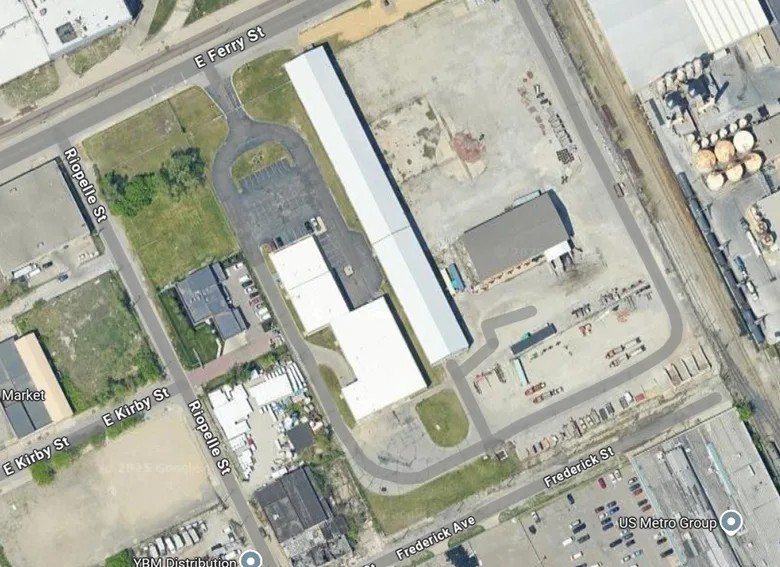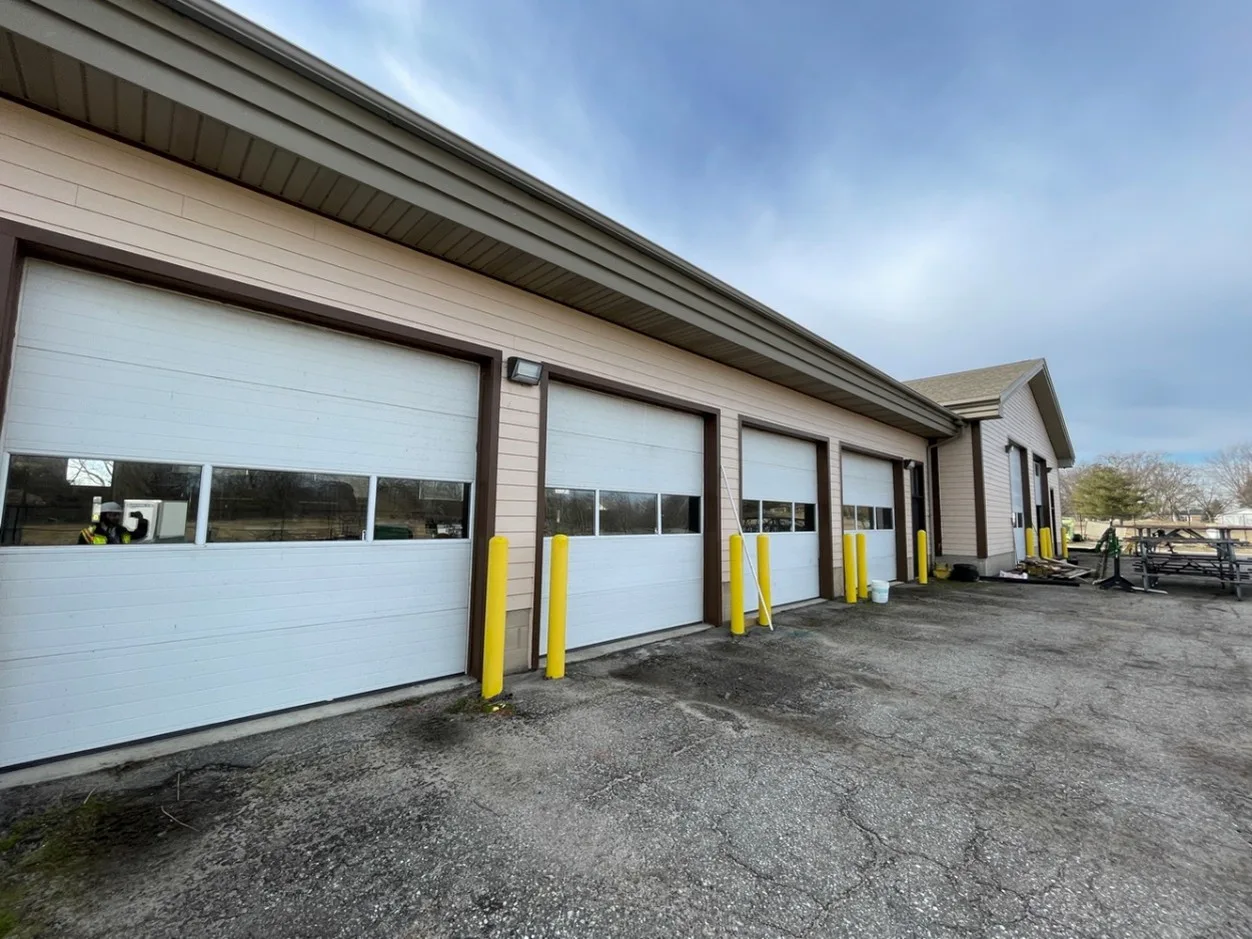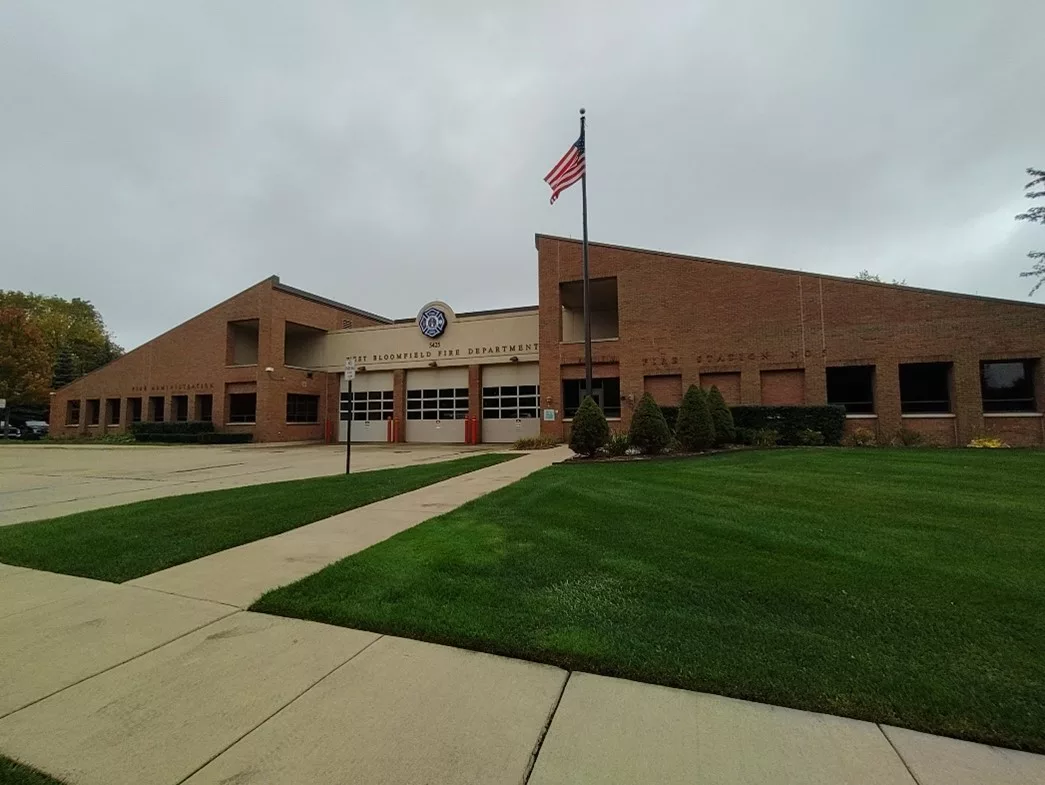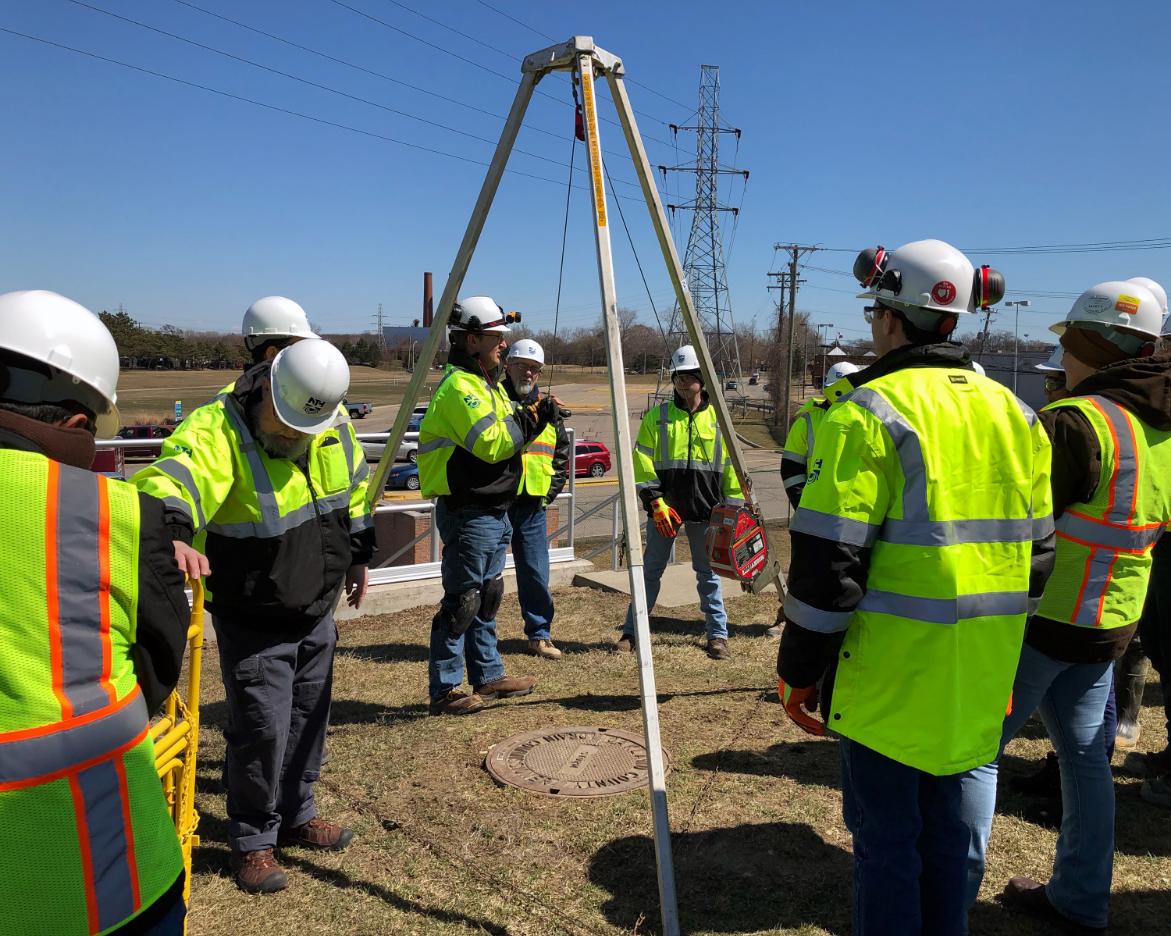Project Overview
Located adjacent to the existing National Superconducting Cyclotron Laboratory (NSCL) in the center of MSU’s East Lansing Campus, the Facility for Rare Isotope Beams (FRIB) is a Department of Energy (DOE) Office of Science, MSU, and State of Michigan funded linear particle accelerator. The FRIB consists of a below grade folded linear particle accelerator and a two story above grade structure to support operation of the accelerator. Experiments will be performed at the FRIB by researchers from around the world and have the potential for advancements in the medical, technology, and energy fields. NTH was selected by MSU to perform design and construction engineering services including the temporary earth retention system (TERS) of the approximately 700-ft long and up to about 60-ft deep excavation within 5-ft of the existing facilities.
Project Scope
An open-cut and cover approach was selected for the construction of the approximately 700-ft by 70-ft Linear Nuclear Accelerator Tunnel and Target Area. NTH worked with MSU and other partners to design the TERS. The developed TERS consisted of a two part design including a secant pile wall and a soldier pile with wooden lagging wall. The secant pile wall was employed for the deeper excavation of the Target Area, which located closer to adjacent structures. The soldier pile with wooden lagging wall was employed for the shallower accelerator tunnel, located farther from adjacent structures. The total TERS contained more than 200 piles and 450 soil anchors for an excavation that ranged from 35-ft to 60-ft below existing ground surface. The selected contractor, Schnabel, elected to construct a modified version of NTH’s design.
NTH provided full time inspection during the construction of the TERS, included the following:
- Installation of drilled shafts for soldier and secant piles
- Mass excavation activities
- Installation of soil anchors
- Loading and testing of soil anchors
- Geotechnical instrumentation and monitoring
- Concrete testing (including over a dozen mass pours)
- Structural steel inspection
- Backfilling around final structure
- Decommissioning of soil anchors
After completion of the TERS, NTH continued to provide construction engineering services for the project. These construction engineering services included the design of a temporary mechanically stabilized earth (MSE) wall located near the middle of the project site. This MSE wall allowed for building craftsman to begin outfitting the above ground structure on one half of the project, while the below ground structure on the other half was still under construction. These simultaneous construction activities accelerated the project by several months, resulting in transferring control of the structure to MSU ahead of schedule.
Client Benefit
The construction engineering services provided by NTH to MSU and the large design and construction team ensured a temporary earth retention system was constructed that would allow for the construction of the FRIB structure and protect adjacent buildings from damage.
